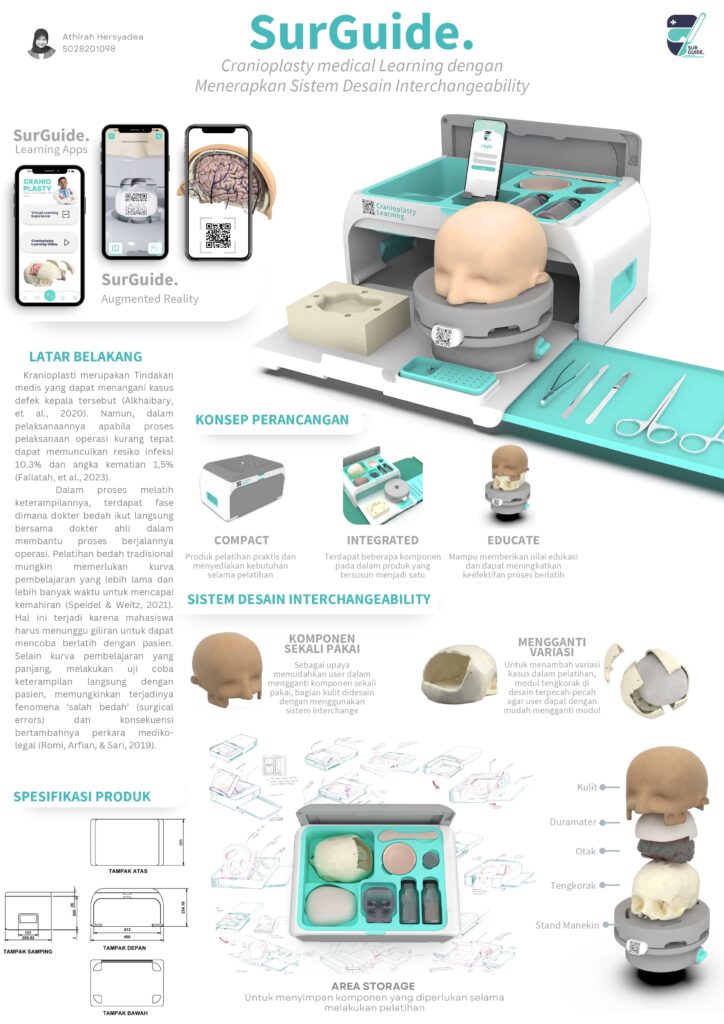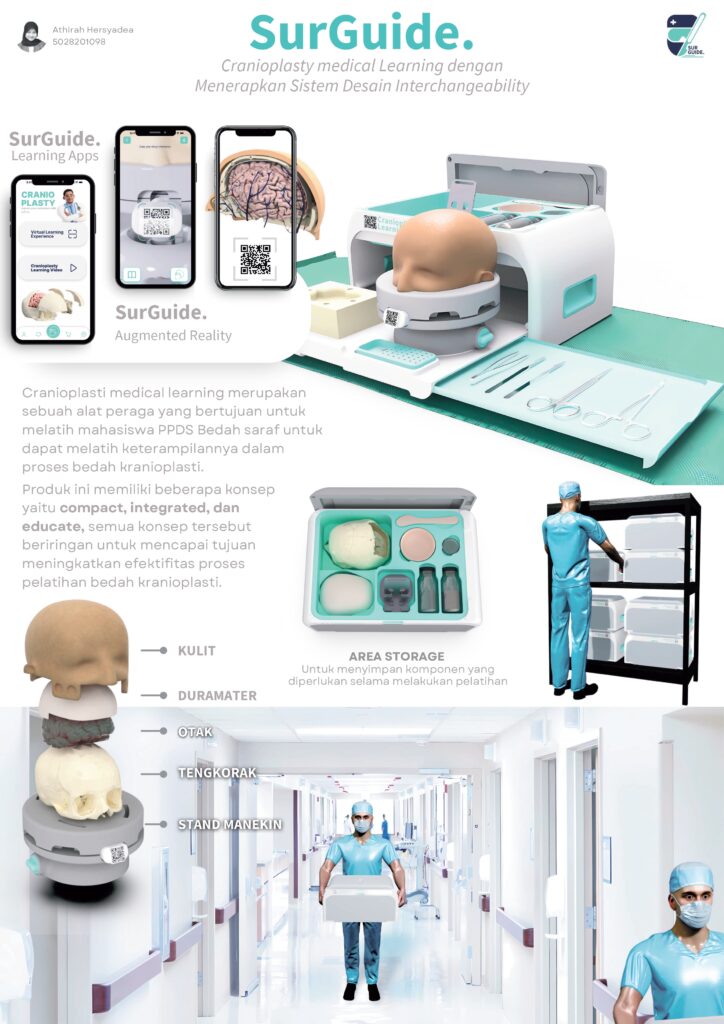Cranioplasty is a surgical procedure performed to repair the anatomical structure of the human head. The frequency of cases in Indonesia is quite high, caused by work accidents, traffic accidents, tumors, and so on. If not treated properly, other medical complications will arise. Although cranioplasty itself is a relatively minor operation, the postoperative complication rate is approximately 10.3%. To support clinical skills, surgeons need useful learning media to practice their skills before dealing with patients. Cadavers are used to train knowledge about human body anatomy. However, the supply of cadavers is decreasing day by day and there is no variety to practice cases. Replica models or mannequins have been used in several medical training institutions as training alternatives with limited scope. This provides an opportunity to develop neurosurgery training models in Indonesia because there are few competitors. Another learning opportunity lies in Augmented reality as a learning tool, this makes training more effective. This research focuses on developing surgical mannequins that will be laid out in such a way as to support the user`s experience in using the product. This research aims to provide effective surgical training, that can be done anywhere and repeatedly by utilizing an interchangeability design system, and there is an augmented reality feature to complete parts that cannot be realized in the physical form of a mannequin. The method used is applying the design thinking method in the field of neurosurgery training. Data were collected using literature studies to determine knowledge of cranioplasty, while in-depth interviews were conducted with partners who are often involved in the process of handling cranioplasty, neurosurgeons, and prospective neurosurgery specialist. All data will be combined as a reference in creating design requirements and objectives, serving as initial guidelines in the product design stage. A cranioplasty learning mannequin product, utilizing an interchangeability design system that will be carried out at the layout stage and has an augmented reality feature will be the result of this research.


